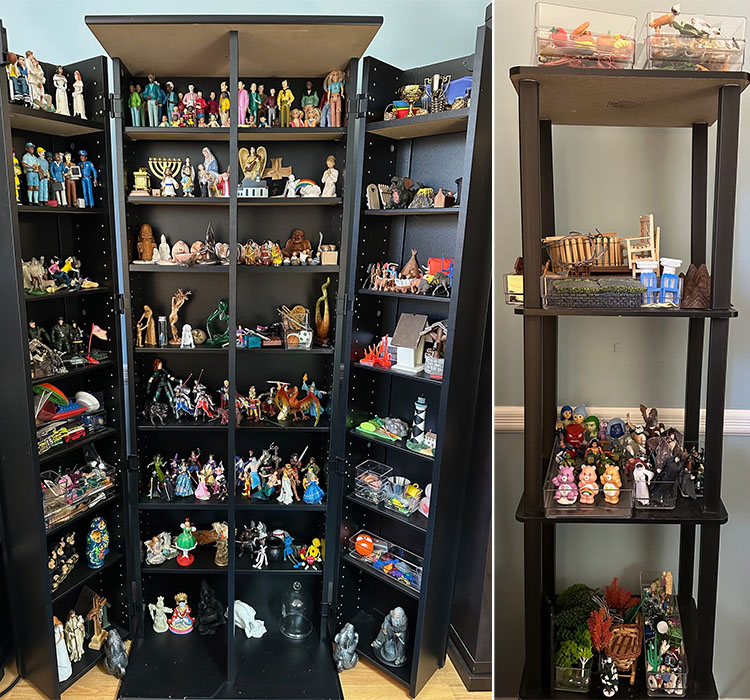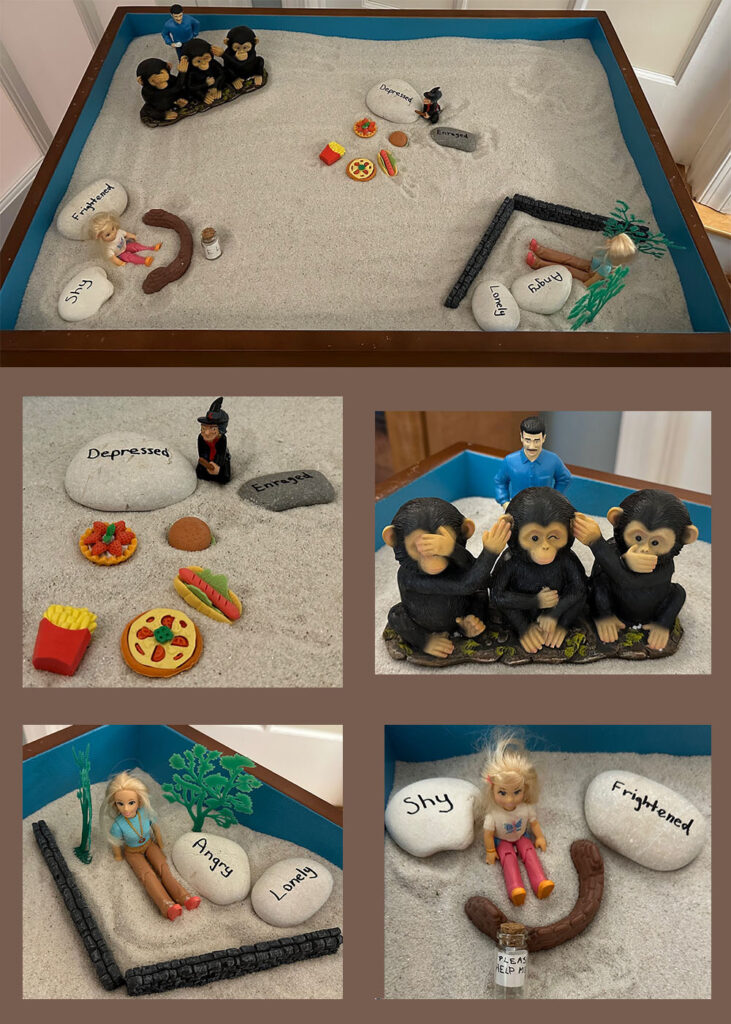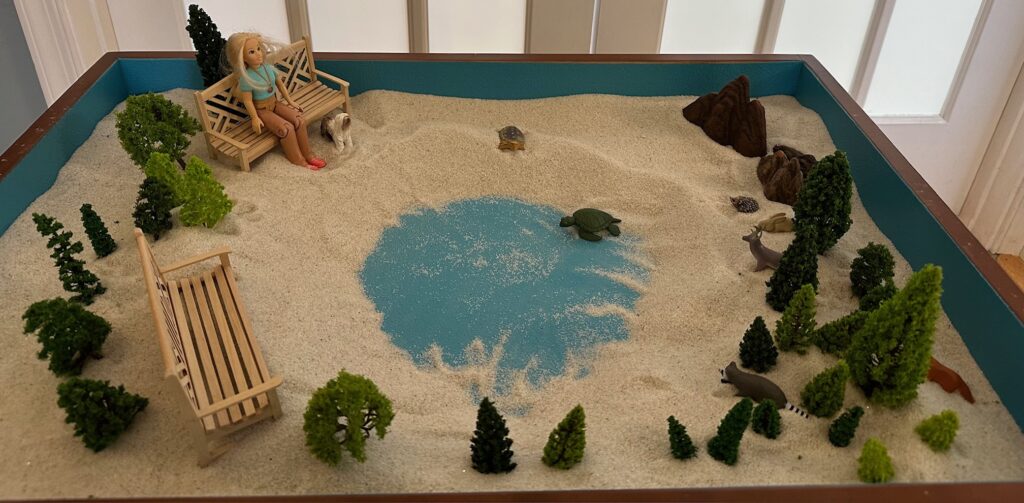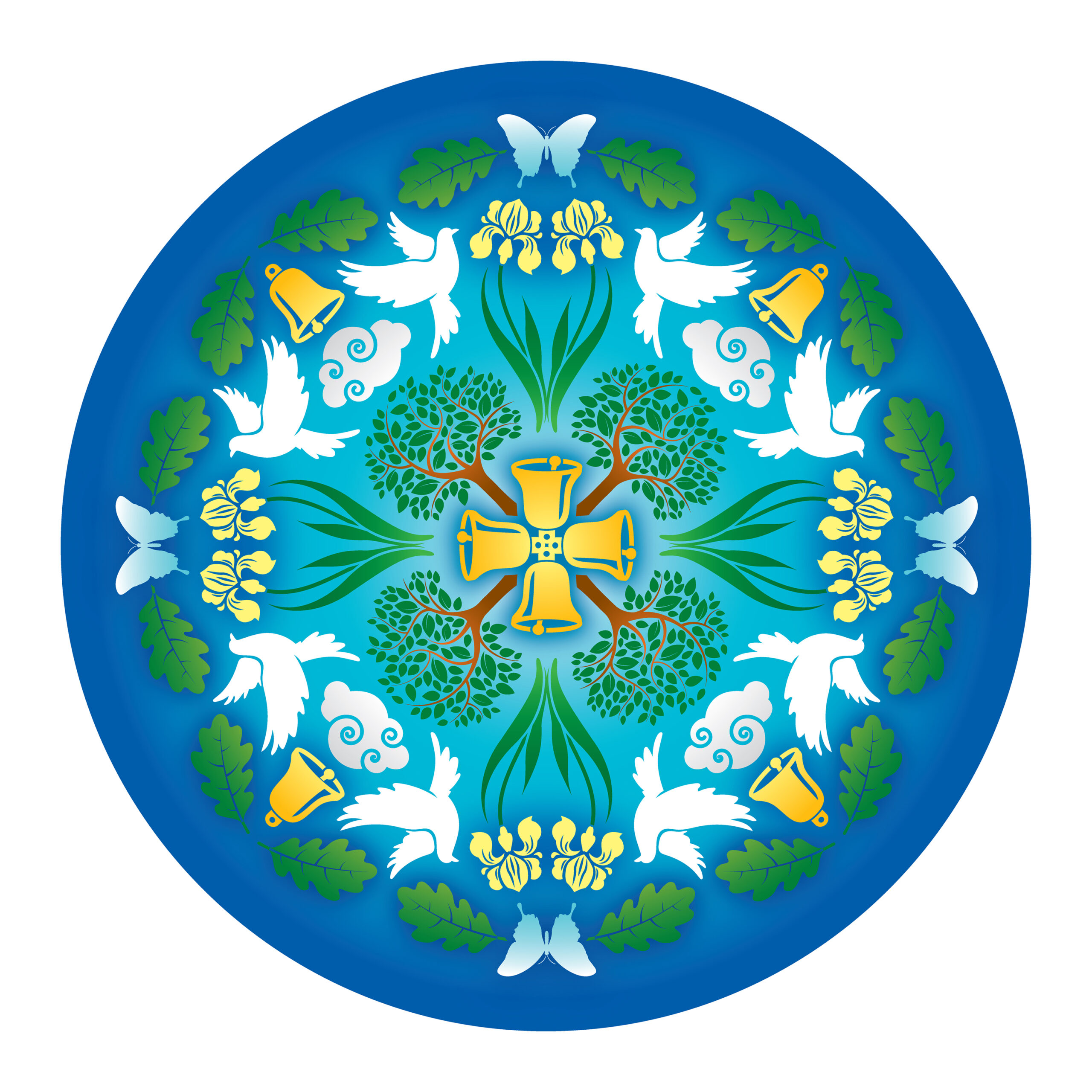The issues that bring clients to therapy don’t only affect their minds; they also affect their bodies. Sandtray therapy incorporates both body and mind by using figurines (which are referred to as “miniatures”) that are placed in a tray full of sand.
This is my sandtray, some miniatures, and a pitcher that can be used to add water to the sandtray.

And here are the rest of my miniatures!

Sandtray therapy can be a stand-alone therapeutic approach, but I generally use it in combination with other types of therapy, namely IFS (Internal Family Systems) therapy and EMDR (Eye Movement Desensitization and Reprocessing).
The sandtray is a great tool when exploring parts in Internal Family Systems therapy. A client can choose miniatures to represent their parts and arrange them in the sandtray. Seeing the parts physically represented in the sandtray makes it easier to see how they act and interact.
The sandtray can also be used to represent aspects of the client’s past and present life, or to represent the client’s family and/or friends and how the client fits with them. This sandtray that I created depicts the way a client may have experienced their family of origin.

The sandtray can be used when we develop resources that support EMDR processing. An example is a safe/happy/calm/peaceful place that the client can go to mentally when needed. The client can use the sandtray to create the scene, which makes it easier to picture and to use during therapy.

I also develop “attachment resources” with my EMDR clients: a nurturer, a wise figure, and a protector. The client can choose miniatures that represent those roles for them.

Sometimes a client will divide the sandtray, with one part representing whatever distressing event they’re working on, and the other part representing a safe space. That way they can go back and forth between the two so that working on the difficult material is less anxiety-producing. In this tray that I created, the left side looks like a depiction of a client’s nightmare, while the right side shows the support a client might receive from their family (including pets) and from their spirituality. Notice that, in both cases, the figure representing the client is surrounded by other figures, but the effects are very different!

The left side of this next sandtray might represent a client feeling small, alone, trapped and sad. The right side could be the way the client wants to feel and how they want their life to be. The bridge over the chasm between them can represent the transition from one to the other.

These are only a few of the many therapeutic uses of the sandtray. I’d love to explore this type of therapy with you! Call or text me at (410) 888-0590 or email me at JenniferBeall.LCPC@gmail.com to make an appointment.
